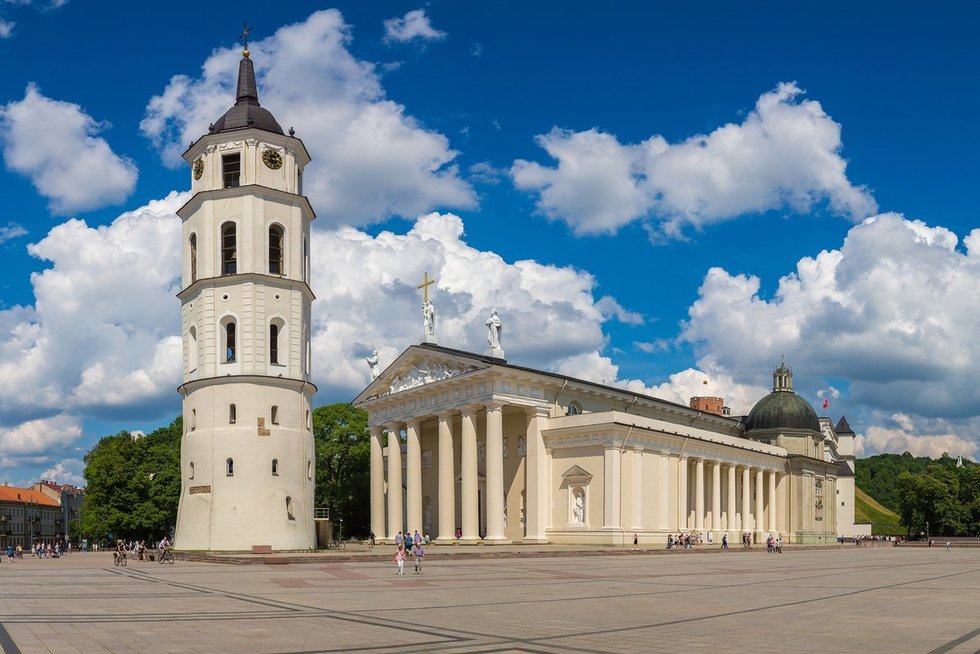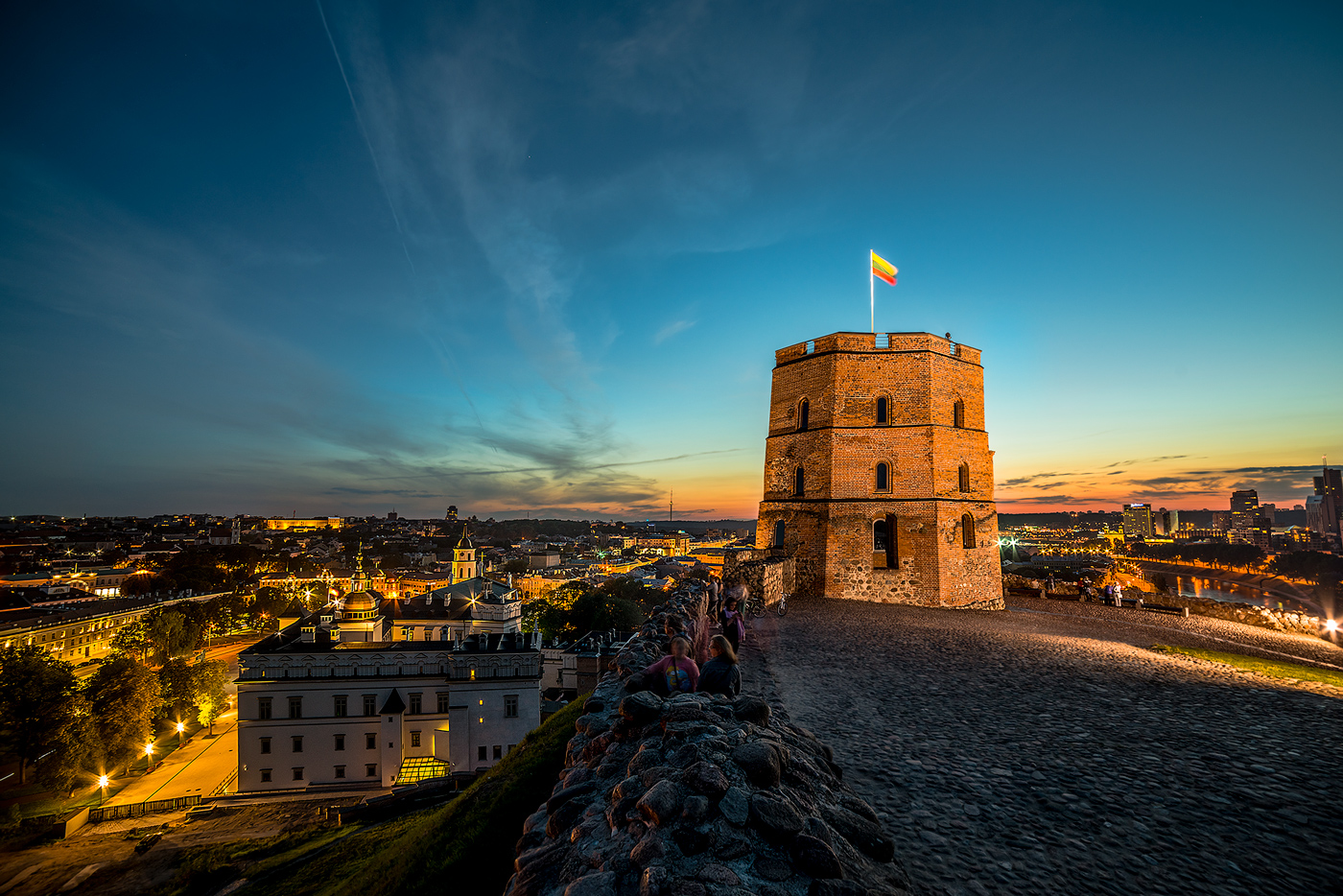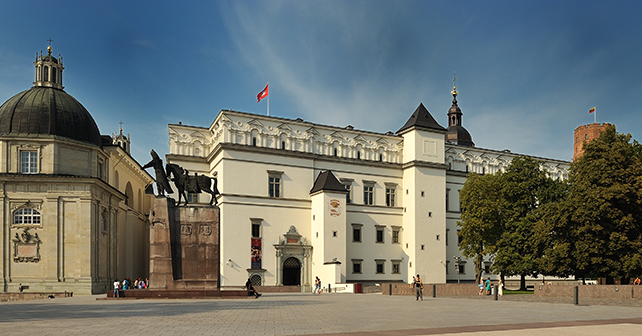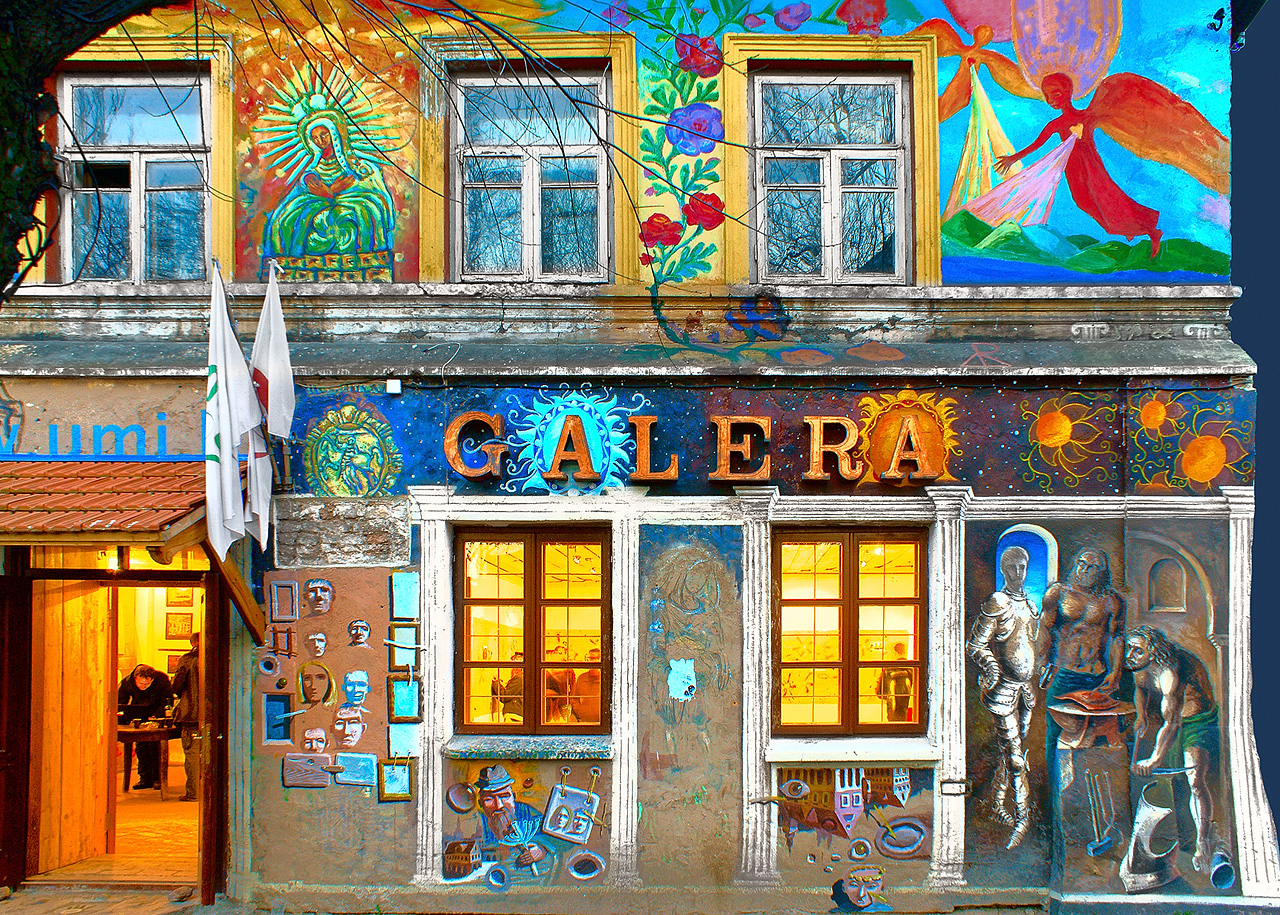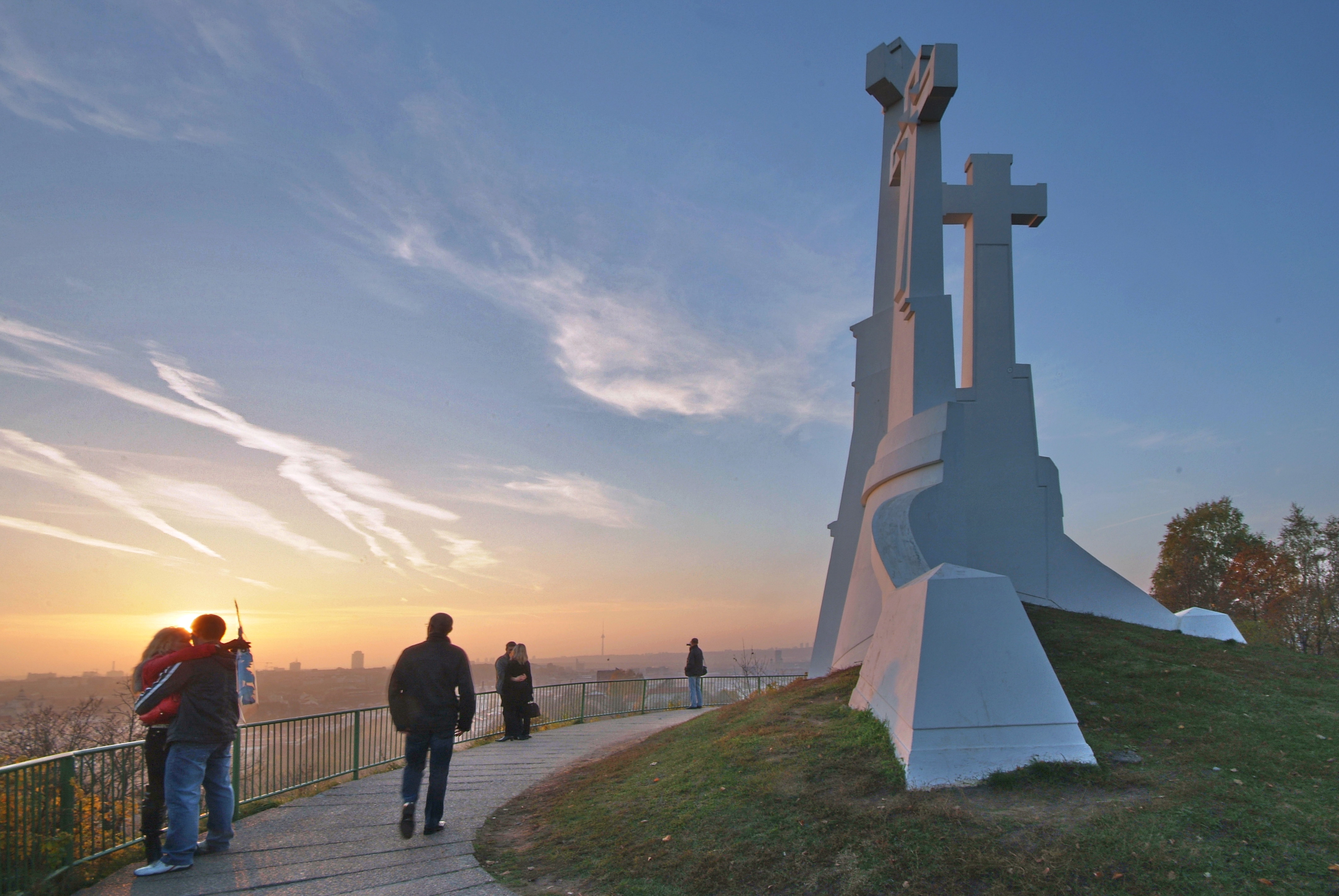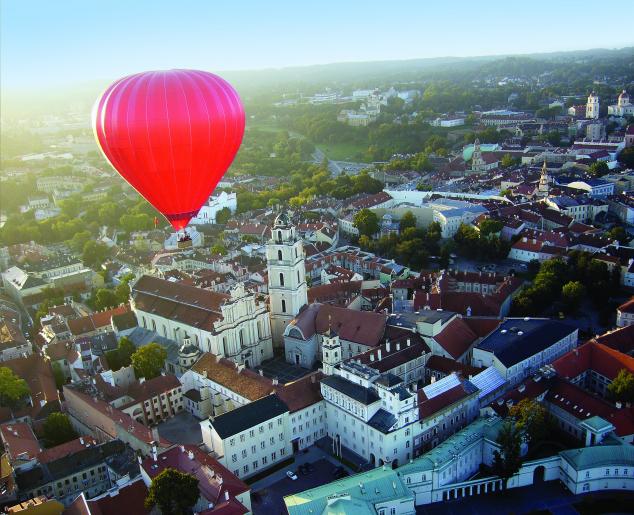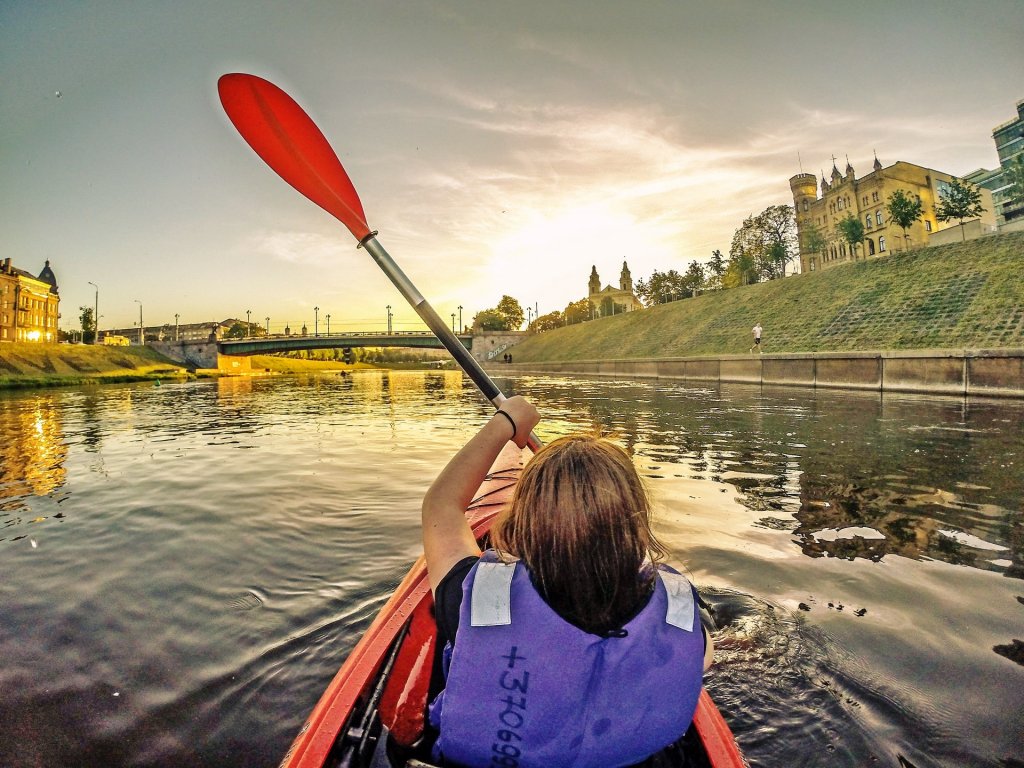Sculptor: Antanas Vivulskis. 1916. Kęstutis Šilgalis. 1989
Some say, that the origins of the three crosses date back to the 17th century when three monks placed them there to pay tribute to a group of fellow monks who were martyred in the 14th century. According to the history books, seven monks were killed and seven were tied to wooden crosses and floated down the Neris River, with the instruction to return to the west where they came from.
The monument has changed many times, and the current one was built by the architect and sculptor, A. Vivulskis in 1989 at the beginning of the Rebirth movement. It was built to replace the one that had been removed by the Soviet authorities in the 1950s, pieces of which still remain on the far side of the slope.
Over the years, the monument has changed many times. The current one was built by the architect and sculptor, K. Šilgalis in 1989, when the Soviet Union began to collapse.
The Hill of Three Crosses is also known as Kreivasis Hill (the Crooked Hill), Plikasis Hill (the Bare Hill) or Tauro Hill.
